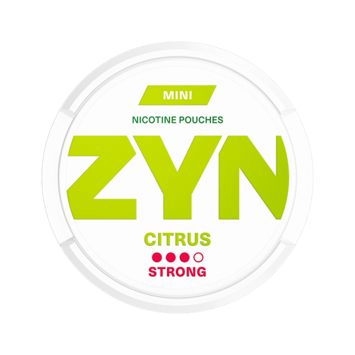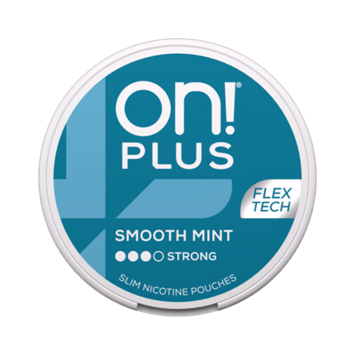What are oral nicotine pouches?
Philip Plainstein

Have you ever wondered about the rising popularity of nicotine pouches in the UK? These innovative products have gained significant attention as a tobacco-free alternative to traditional smoking methods. Designed to be placed between your lip and gum, they offer a discreet way to consume nicotine without the need for tobacco leaves.
Since their emergence around 2019, nicotine pouches have become a preferred choice for many, offering a variety of flavours and convenient use. They typically contain nicotine along with ingredients like water and food-grade additives, making them an attractive option for those seeking smoke-free alternatives. However, concerns about nicotine addiction, especially among younger users, have sparked important discussions about their impact and regulation.
This article serves as your comprehensive guide to understanding nicotine pouches, exploring their composition, popularity, and the implications surrounding their use.
Understanding Oral Nicotine Pouches
Nicotine pouches have become a talked-about product in the UK, especially among those looking for alternatives to smoking. These small, discreet pouches are placed between the gum and lip, delivering a controlled amount of nicotine without the need for tobacco. They’ve gained popularity since 2019, offering a modern way to consume nicotine.
Defining the Product
What makes these pouches unique? They use a nicotine powder enclosed in a permeable material, unlike traditional tobacco products. This design makes them a standout in the nicotine product market. They come in various flavours and strengths, catering to different preferences and needs.
Growth in Popularity and Usage Trends
The rise in use is linked to their ease of use and discreet nature. Marketing campaigns often emphasize the freedom to use them anywhere, appealing to a broad audience. Surveys show increasing popularity among both youth and adults, with many smokers turning to them as an alternative.
| Feature | Traditional Tobacco | Nicotine Pouches |
|---|---|---|
| Tobacco Use | Contains tobacco | Tobacco-free |
| Nicotine Delivery | Through combustion | Through permeable pouch |
| Health Considerations | High health risks | Lower risk, but concerns remain |
The table highlights key differences, showing why many are choosing pouches over traditional products. However, it’s important to be aware of potential health implications, including gum irritation and addiction risks. As their popularity grows, so does the discussion about their impact on public health.
Oral Nicotine Pouches: Composition, Mechanism and Benefits
Nicotine pouches have gained attention as a modern alternative to smoking. These small pouches are designed to be placed between your lip and gum, offering a discreet way to consume nicotine without tobacco. But what makes them unique?
Ingredients and Non-Tobacco Substrate
Each pouch is primarily made up of water and microcrystalline cellulose, with nicotine and food-grade additives. This tobacco-free composition makes them an attractive option for those seeking alternatives to traditional tobacco products.
How They Deliver Nicotine
The nicotine is absorbed through the oral mucosa, providing a controlled release. This method offers a sustained dose, differing from the immediate hit of cigarettes.
Potential Benefits Compared to Smoking
Compared to smoking, nicotine pouches pose lower health risks. They contain fewer harmful constituents, making them a safer choice. However, it’s important to recognize that while they may aid in cessation, further research is needed to fully understand their long-term effects.
Research indicates that these pouches deliver nicotine effectively, similar to other smokeless products. They come in various flavours and strengths, catering to different preferences and needs. While they offer convenience and discretion, ongoing studies are essential to assess their long-term benefits and risks fully.
For more insights into how these products compare to traditional tobacco, you can explore this study on perceptions among young adults.
Evaluating Health Effects and Side Implications
Understanding the health implications of oral nicotine pouches is crucial for making informed decisions. While they are generally considered a lower-risk option compared to smoking, they are not without potential side effects.
General Health Considerations
Oral nicotine pouches contain nicotine, which can affect cardiovascular health and is addictive. Studies suggest that prolonged use may lead to mouth irritation and gum recession. The absence of tobacco leaves contributes to their classification as tobacco-free products, but their long-term health effects still require more research.
Possible Oral Health Impacts
Users have reported issues like sore mouths and gum irritation. Comparisons with nicotine replacement therapies show both benefits and limitations. While they offer a discreet way to consume nicotine, the potential for addiction remains a concern.
Research indicates that while oral nicotine pouches may aid in smoking cessation, their effectiveness varies. They deliver nicotine through the oral mucosa, providing a sustained release. However, their role in smoking cessation strategies needs further exploration compared to traditional methods.
Regulations in the UK are evolving, aiming to balance public health concerns with product availability. As the market grows, so does the debate on their impact. Understanding these aspects helps users weigh the benefits against the risks.
Nicotine Pouches as Part of Smoking Cessation Strategies
Exploring the role of nicotine pouches in smoking cessation is a topic of growing interest. These products are increasingly being considered as alternatives to traditional methods like patches or gum. However, their effectiveness compared to established therapies remains under debate.
Comparative Analysis with Traditional Nicotine Replacement Therapies
Traditional therapies, such as nicotine gum and lozenges, have been widely studied and endorsed for cessation. In contrast, nicotine pouches are yet to receive such approval. Studies suggest that while they deliver nicotine effectively, their long-term benefits and safety are still under investigation.
| Aspect | Nicotine Pouches | Traditional Therapies |
|---|---|---|
| Mechanism | Slow, sustained release | Varies by product (fast for gum, slow for patches) |
| User Satisfaction | Higher due to convenience and flavor options | Lower due to less variety |
| Side Effects | Mouth irritation, gum recession | Minor skin irritation (patches), jaw discomfort (gum) |
Research indicates that nicotine pouches may reduce cravings similarly to traditional methods, though not always statistically significantly. A 2022 study found that users reported fewer side effects with pouches compared to gum, but more research is needed to confirm these findings.
“Nicotine pouches offer a novel approach to cessation, but their role remains uncertain without further studies.” – Public Health Review, 2023
Flavour variety and ease of use make nicotine pouches appealing, especially to young people. However, concerns about dual use with smoking or vaping persist. While they show promise, health authorities caution against relying solely on them for cessation.
Legislation and Regulatory Framework in the UK
Understanding the legal landscape surrounding nicotine pouches in the UK is essential for consumers and stakeholders alike. Currently, these products fall under the General Product Safety Regulations (GPSR), categorised as consumer goods rather than tobacco products. This classification means they are not subject to the same restrictions as e-cigarettes or medicinal products.
Current Standards and Future Prospects
Regulatory bodies are reassessing whether existing guidelines are adequate, given the rising prevalence of these products. Unlike smokeless tobacco, nicotine pouches are not regulated under the Tobacco and Related Product Regulations. Discussions are ongoing about potential changes, such as limiting nicotine strength and imposing advertising restrictions to mitigate risks, particularly among young people.
| Aspect | Smokeless Tobacco | Nicotine Pouches |
|---|---|---|
| Regulation | Tobacco and Related Product Regulations | General Product Safety Regulations (GPSR) |
| Restrictions | Stringent advertising and marketing limits | Currently no specific restrictions |
| Nicotine Limits | Varies by product | Proposed maximum limits |
The UK market is evolving, with authorities responding to market trends. The proposed Tobacco and Vapes Bill aims to set an age limit for purchasing nicotine pouches at 18. This legislation could significantly impact public health and product marketing. For more details on how these products affect your gums, visit this link.
Final Reflections on Oral Nicotine Pouches
In conclusion, the debate surrounding oral nicotine pouches presents a dual narrative of potential benefits and lingering concerns. While these products offer a tobacco-free alternative with lower toxicant exposure compared to smoking, their long-term health implications remain under scrutiny. Studies indicate a reduction in harm, with some manufacturers suggesting a 95% decrease in toxicants, making them a promising option for harm reduction strategies.
Marketing strategies have played a significant role in their popularity, especially among younger audiences, due to their appealing flavours and discreet use. However, this appeal raises concerns about addiction and oral health issues. Research shows that while users report fewer side effects compared to traditional nicotine replacement therapies, the potential for mouth irritation and gum recession persists.
The role of consumer choice is pivotal in navigating the risks and benefits. Users are encouraged to remain critical of marketing claims and seek comprehensive advice, particularly when considering switching from traditional tobacco products. For those interested in understanding how these products work and their impact on gums, further reading is available here and here.
Ultimately, while oral nicotine pouches may aid in reducing harm compared to smoking, their role in cessation strategies and long-term health effects requires further investigation. Staying informed about regulatory updates and health studies is crucial for making educated decisions about their use.









